Sigma A 105 mm f/1.4 DG HSM
5. Chromatic and spherical aberration
Chromatic aberration
The Sigma A 105 mm f/1.4 DG HSM shows slight ‘colouring’ in out-of-focus images so it is not corrected in a perfect way; still it would be difficult to complain because that colouring is really delicate and it won’t create any serious problems in real life photos.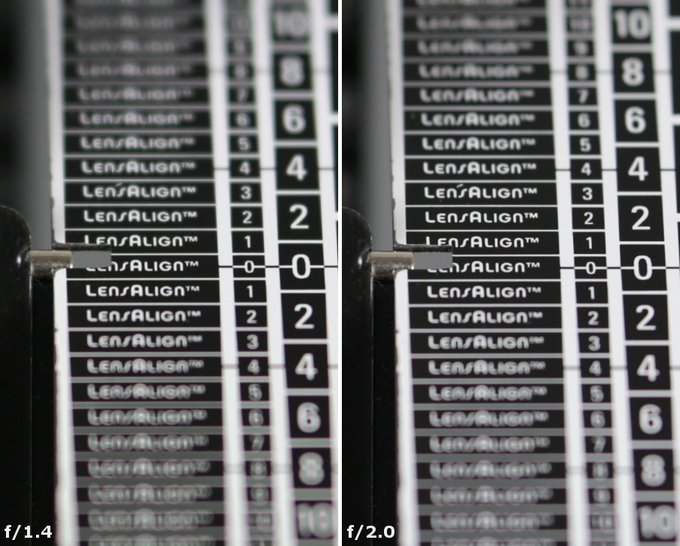 |
By glancing at a graph below you can assess how the tested lens correct lateral chromatic aberration.
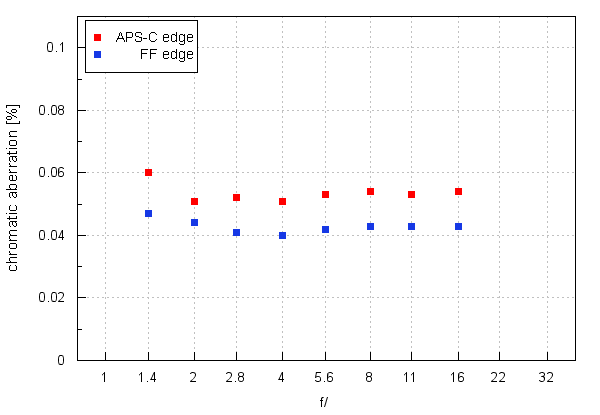
Please Support UsIf you enjoy our reviews and articles, and you want us to continue our work please, support our website by donating through PayPal. The funds are going to be used for paying our editorial team, renting servers, and equipping our testing studio; only that way we will be able to continue providing you interesting content for free. |
- - - - - - - - - - - - - - - - - - - - - - - - - - - - - - - - - - - - - - - - - - - - - - - -
All results are within a range from 0.04 to 0.06 so they are on a borderline between low and imperceptible level. It means the Sigma should be praised also in this category.
| Canon 5DáIII, RAW, f/1.4 | Canon 5DáIII, RAW, f/4.0 |
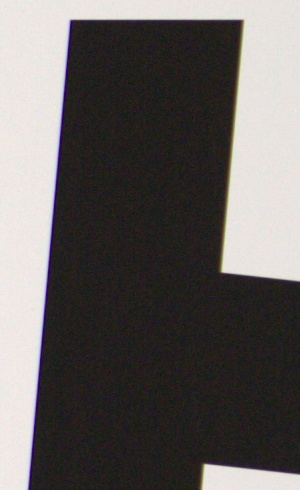
|
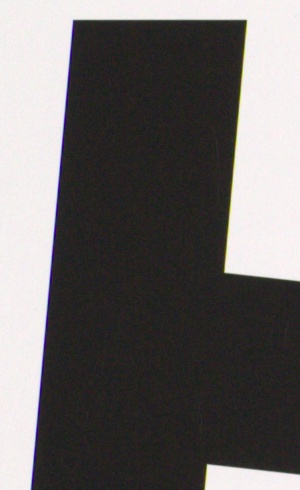
|
Spherical aberration
First photos of this chapter show a slight ‘focus shift’ as, after passing from f/1.4 to f/2.0, the depth of field is shifted slightly to the back. It is obvious the Sigma doesn’t correct spherical aberration in an ideal way. In order to check how big this problem really is we tested the lens some more. Firstly we looked at defocused circles of light reached before and after the focus.
| Canon 5DáIII, f/1.4, in front of | Canon 5DáIII, f/2.0, behind |
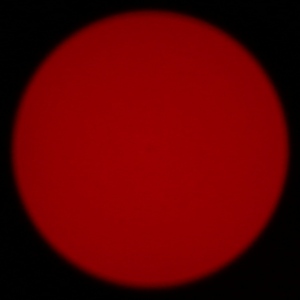
|
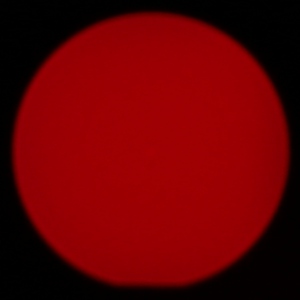
|
The spherical aberration problem cannot be serious because the circles are almost identical; the only visible differences are a minimally lighter rim and a slight truncation of the circle we got for the circle created after the focus.
In order to get a more explicit results and clear the situation we performed an experiment on one of our testing chart. We set the focus as optimally as possible by f/1.4 and then we shot several photos stopping down the lens but without moving the focus ring. During the second session by every aperture we set the focus anew. The comparison between both measurements we present below.
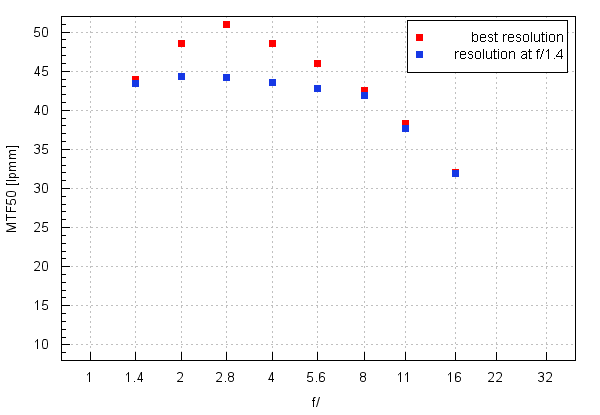
If there were no problems with spherical aberration at all both sets of measurements would mirror each other within the measure of error. The difference is visible here but it is not big; it makes us say spherical aberration of the Sigma A 1.4/105 is not corrected in a perfect way and it contributes to the decrease of resolution near the maximum relative aperture.
You might wonder why it is the case. No lens, especially no f/1.4 device, is corrected perfectly near its maximum relative aperture. If it was the case resolution records would be achieved exactly by f/1.4, not on stopping down the aperture by 2-3 EV. An optics specialist constructing a lens has to choose which aberrations should be corrected better and which ones might be left on a bit higher level. Perhaps in this case it was more profitable to leave a higher level of spherical aberration in order to damp down other aberrations; as a result, you see a resolution record by f/1.4. Additionally, fans of pleasant bokeh will appreciate a bit higher level of spherical aberration as it means nicer blurry areas.
With this lens Sigma makes arguments about contemporary lenses providing boring, sterile bokeh null and void. On the other hand you have to remember that the appearance of blurry areas in a photo depends on the photographer who places objects and sources of light in the frame with more or less skill. The sterile, boring, technical or otherwise named bokeh has nothing to do with it.






